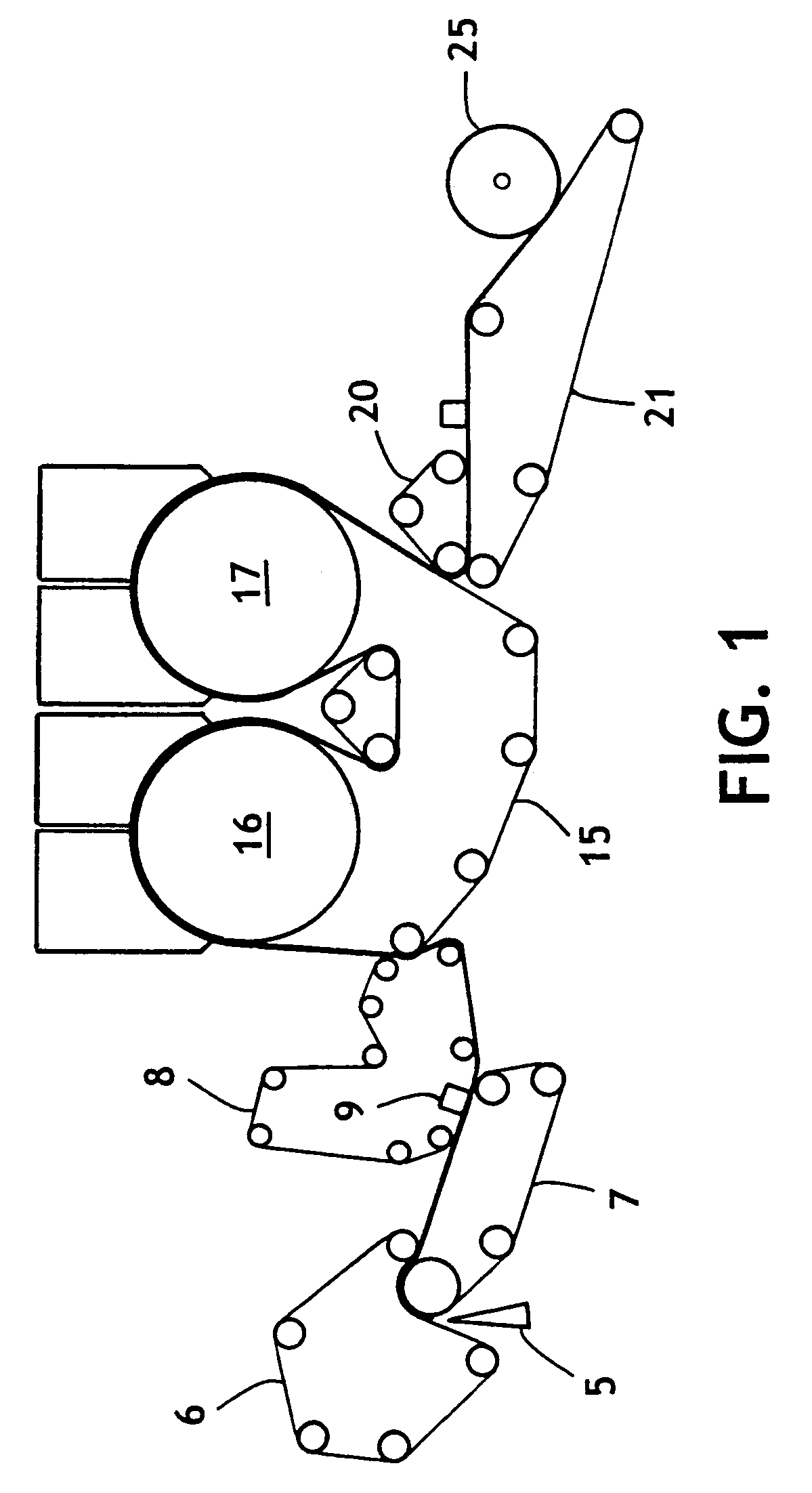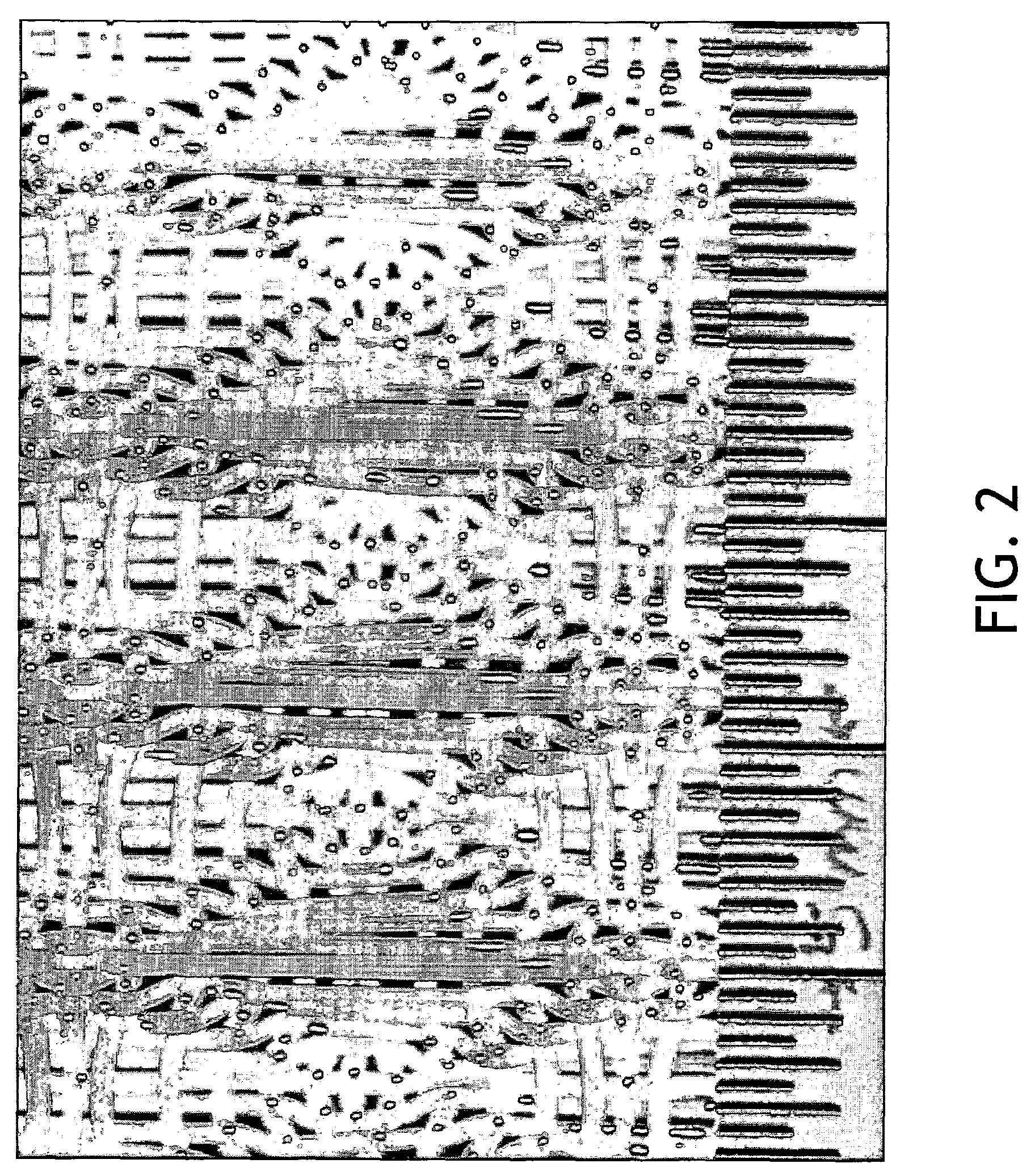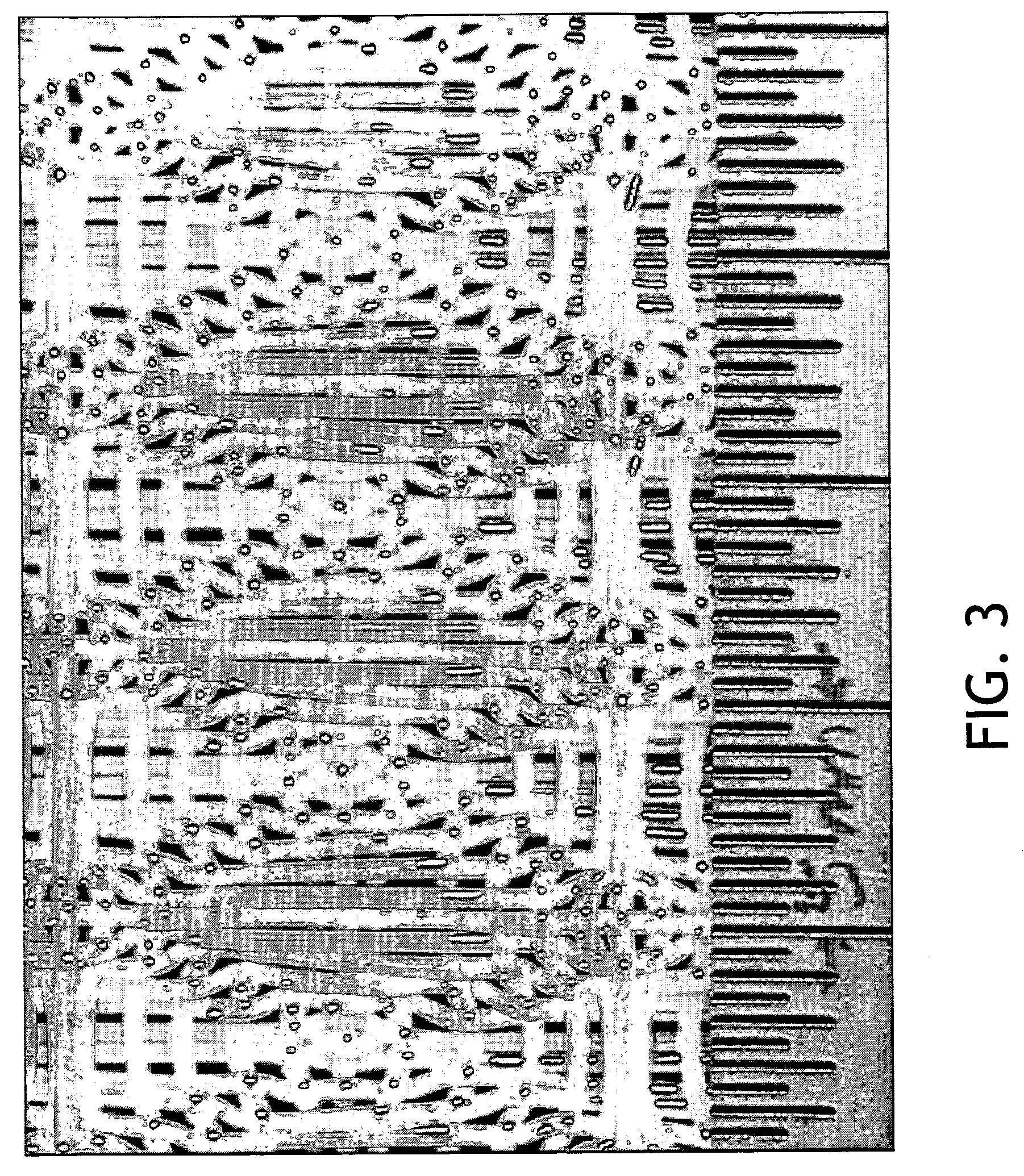Tissue products having high durability and a deep discontinuous pocket structure
a discontinuous pocket and tissue technology, applied in the field of tissue products, can solve the problem that the beneficial cd stretch cannot be easily removed from the tissue, and achieve the effects of high cd tea/cd tensile strength ratio, high durability, and high cd slop
- Summary
- Abstract
- Description
- Claims
- Application Information
AI Technical Summary
Benefits of technology
Problems solved by technology
Method used
Image
Examples
example 1
[0056]A pilot uncreped throughdried tissue machine was configured similarly to that disclosed in U.S. Pat. No. 5,607,551 to Farrington et al. and was used to produce a one-ply, uncreped throughdried bath tissue basesheet. In particular, a fiber furnish comprising 35% LL-19 and 65% Eucalyptus fiber was fed to a Fourdrinier former using a Voith Fabrics 2164-B33 forming fabric (commercially available from Voith Fabrics in Raleigh, N.C.). A flow spreader headbox was utilized to deliver a blended sheet. The speed of the forming fabric was about 0.35 meters per second. The newly-formed wet tissue web was then dewatered to a consistency of about 30 percent using vacuum suction before being transferred to a transfer fabric which was traveling at about 0.27 meters per second (about 30% rush transfer). The transfer fabric was a Voith Fabrics 2164-B33 fabric. A vacuum shoe pulling about 23 centimeters of mercury vacuum was used to transfer the wet tissue web to the transfer fabric.
[0057]The we...
example 2
[0059]Tissue sheets were made as in Example 1 with the following exceptions. The transfer fabric was a Voith Fabrics 2164-B33 fabric and was traveling at 0.35 m / sec (0% rush transfer). The wet tissue web was then transferred to a Voith Fabrics t1207-6 throughdrying fabric. The throughdrying fabric was traveling at a speed of about 0.27 meters per second (30% rush transfer).
[0060]Bath tissue basesheet was produced with an oven-dry basis weight of approximately 31 gsm. The resulting product was equilibrated for at least 4 hours in TAPPI Standard conditions (73° F., 50% relative humidity) before tensile testing. All testing was performed on basesheet from the pilot machine without further processing. The process conditions are shown in Table 1. The resulting product tensile properties are reported in Table 2.
examples 3-13
[0061]To illustrate the fabrics of this invention, a woven throughdrying fabric was manufactured which contained 10 different deep pocket-structure fabric designs progressing in a machine-direction sequence along with a t1207-6 control. Tissue sheets were made as in Example 1 with the following exceptions. The transfer fabric was a Voith Fabrics t1207-6 fabric and was traveling at 0.27 m / sec (30% rush transfer). The wet tissue web was then transferred to the sampler belt throughdrying fabric. The throughdrying fabric was traveling at a speed of about 0.27 meters per second (0% rush transfer).
[0062]During manufacturing, the first and second transfer vacuum settings were adjusted to a constant valve position ensure acceptable pinhole levels for all manufactured codes, e.g. across all different fabric types, since the woven fabric designs varied widely in texture. A vacuum shoe pulling an average of 34 centimeters of mercury vacuum was used to transfer the wet tissue web to the transfe...
PUM
| Property | Measurement | Unit |
|---|---|---|
| depth | aaaaa | aaaaa |
| depth | aaaaa | aaaaa |
| width | aaaaa | aaaaa |
Abstract
Description
Claims
Application Information
 Login to View More
Login to View More - R&D
- Intellectual Property
- Life Sciences
- Materials
- Tech Scout
- Unparalleled Data Quality
- Higher Quality Content
- 60% Fewer Hallucinations
Browse by: Latest US Patents, China's latest patents, Technical Efficacy Thesaurus, Application Domain, Technology Topic, Popular Technical Reports.
© 2025 PatSnap. All rights reserved.Legal|Privacy policy|Modern Slavery Act Transparency Statement|Sitemap|About US| Contact US: help@patsnap.com



